The automotive market is a crowded space, with SUVs leading the charge in popularity and versatility. Two standout contenders that have caught the attention of drivers and critics alike are the Hyundai Tucson and the SEAT Ateca. Both vehicles offer a blend of performance, comfort, and technology, making them worthy opponents in this segment. Let’s take a detailed look at how these two SUVs stack up against each other in terms of technical specifications, fuel efficiency, and innovative features.
Hyundai Tucson vs SEAT Ateca – Performance, range & efficiency compared
Compare performance, boot capacity, efficiency and price at a glance.
Find out which car is the better choice for you – Hyundai Tucson or SEAT Ateca?
Design and Dimensions
Starting with the dimensions, the Hyundai Tucson measures 4510 mm in length, 1865 mm in width, and 1650 mm in height. It boasts a spacious trunk capacity of up to 620 liters, making it a practical choice for families and those needing extra cargo space. In comparison, the SEAT Ateca is slightly smaller at 4381 mm long, 1841 mm wide, and 1601 mm tall, with a trunk capacity of 510 liters. While both vehicles can accommodate five passengers comfortably, the Tucson tends to offer more interior space and storage options.
Engine Performance and Transmission
Engine options play a crucial role in defining the performance of an SUV. The Tucson offers a diverse range of engines including diesel MHEV, petrol MHEV, petrol, full hybrid, and plug-in hybrid configurations, delivering power outputs between 136 and an impressive 252 hp. Its torque figures range from 320 to 367 Nm, showcasing robust capabilities for both city driving and off-road adventures.
The SEAT Ateca, while offering fewer choices, provides solid options with petrol and diesel engines, producing power from 116 to 150 hp. Its torque levels peak at 360 Nm, enabling commendable performance in urban and highway settings. Transmission options for both vehicles include manual and automatic gearboxes, with the Tucson presenting a more advanced double-clutch system for smoother gear transitions.
Fuel Efficiency and Eco-Friendliness
Fuel efficiency is always a key consideration for potential buyers. The Tucson offers impressive fuel consumption figures ranging from 5.1 to 6.8 L/100km, depending on the engine choice. Its CO2 emissions are competitive, with the lowest recorded at 126 g/km, making it a more environmentally friendly option overall.
The Ateca, however, is not far behind, with consumption figures ranging between 4.9 and 6.4 L/100km and CO2 emissions as low as 129 g/km. Both vehicles cater to eco-conscious consumers but the Tucson edges out slightly thanks to its hybrid variants and lower emissions for the non-hybrid options.
Innovative Features and Technology
In terms of technological innovations, the Hyundai Tucson is equipped with an impressive suite of features including advanced driver assistance systems (ADAS), a digital cockpit, and an updated infotainment system with integration for Apple CarPlay and Android Auto. It also boasts options for ambient lighting, panoramic sunroof, and a comprehensive safety package that includes lane-keeping assist, adaptive cruise control, and blind-spot monitoring.
The SEAT Ateca, on the other hand, also offers a range of tech-oriented features, including a touchscreen infotainment system compatible with smart devices, a rear-view camera, and an array of safety features. Though not as extensive as those found in the Tucson, the Ateca provides essential technology that appeals to the majority of drivers.
Conclusion
When it comes down to the Hyundai Tucson vs. SEAT Ateca, each SUV brings its own strengths and unique offerings to the table. The Tucson stands out with its extensive engine range, spacious interior, and advanced technological features, catering to those looking for a versatile and high-performing vehicle. The Ateca, while smaller and offering fewer engine choices, remains a solid competitor with strong performance and good fuel economy, making it a practical option for city dwellers.
Ultimately, the choice between the two will depend on personal preferences, whether you prioritize power, space, or technological innovation. Both models are excellent contenders in the competitive SUV segment, ensuring a tough decision for potential buyers.
Here’s where it gets real: The technical differences in detail
Costs and Efficiency:
Looking at overall running costs, both models reveal some interesting differences in everyday economy.
SEAT Ateca has a clearly perceptible advantage in terms of price – it starts at 25100 £, while the Hyundai Tucson costs 30600 £. That’s a price difference of around 5529 £.
Fuel consumption also shows a difference: Hyundai Tucson manages with 1 L and is therefore convincingly more efficient than the SEAT Ateca with 4.90 L. The difference is about 3.90 L per 100 km.
Engine and Performance:
Power, torque and acceleration are the classic benchmarks for car enthusiasts – and here, some clear differences start to show.
When it comes to engine power, the Hyundai Tucson has a significantly edge – offering 252 HP compared to 150 HP. That’s roughly 102 HP more horsepower.
In acceleration from 0 to 100 km/h, the Hyundai Tucson is somewhat quicker – completing the sprint in 7.90 s, while the SEAT Ateca takes 9 s. That’s about 1.10 s faster.
In terms of top speed, the SEAT Ateca performs hardly perceptible better – reaching 202 km/h, while the Hyundai Tucson tops out at 194 km/h. The difference is around 8 km/h.
There’s also a difference in torque: Hyundai Tucson pulls barely noticeable stronger with 367 Nm compared to 360 Nm. That’s about 7 Nm difference.
Space and Everyday Use:
Cabin size, boot volume and payload all play a role in everyday practicality. Here, comfort and flexibility make the difference.
Both vehicles offer seating for 5 people.
In curb weight, SEAT Ateca is a bit lighter – 1345 kg compared to 1520 kg. The difference is around 175 kg.
In terms of boot space, the Hyundai Tucson offers slightly more room – 620 L compared to 510 L. That’s a difference of about 110 L.
In maximum load capacity, the Hyundai Tucson performs to a small extent better – up to 1799 L, which is about 195 L more than the SEAT Ateca.
When it comes to payload, Hyundai Tucson slight takes the win – 545 kg compared to 525 kg. That’s a difference of about 20 kg.
Who wins the race?
The Hyundai Tucson proves to be dominates this comparison and therefore becomes our DriveDuel Champion!
Hyundai Tucson is the better all-rounder in this comparison.
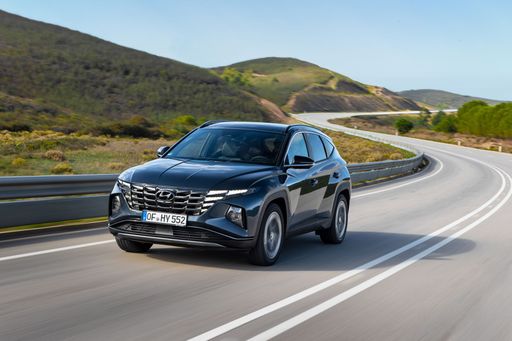 @ Hyundai Motor Company
@ Hyundai Motor Company
Hyundai Tucson
Hyundai Tucson
Hyundai Tucson marries bold, sculpted looks with a clever, roomy cabin that feels smarter than its price tag suggests. It's composed on the road, easy to live with day-to-day, and a sensible choice for buyers who want SUV style without the showroom theatrics.
details @ Hyundai Motor Company
@ Hyundai Motor Company
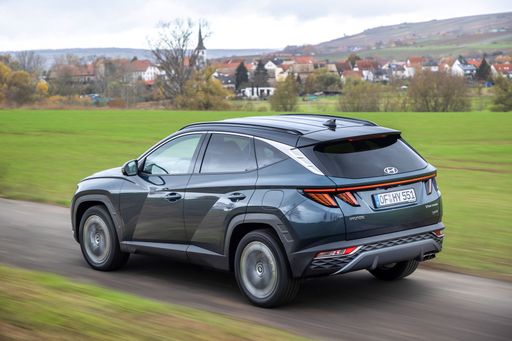 @ Hyundai Motor Company
@ Hyundai Motor Company
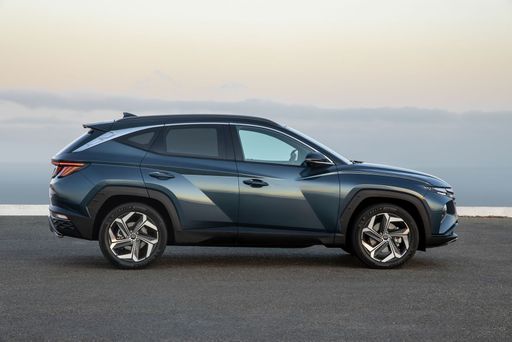 @ Hyundai Motor Company
@ Hyundai Motor Company
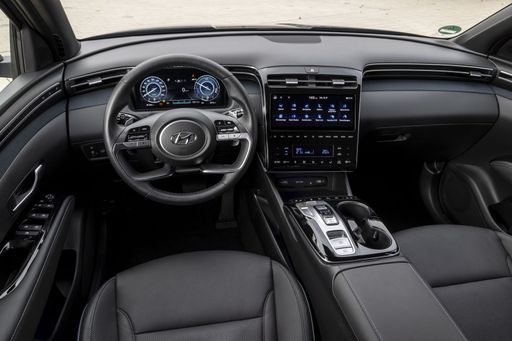 @ Hyundai Motor Company
@ Hyundai Motor Company
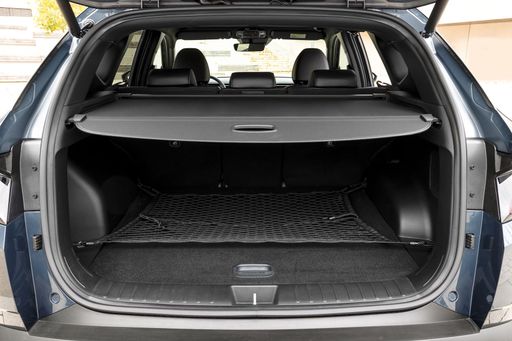 @ Hyundai Motor Company
@ Hyundai Motor Company
SEAT Ateca
The SEAT Ateca stands out with its dynamic design, perfectly blending style and functionality for urban and rural settings alike. Inside, it offers a spacious and comfortable cabin, complete with advanced technology and intuitive controls that enhance the driving experience. On the road, the Ateca delivers a balanced performance, providing a smooth ride with agile handling that makes it versatile for various driving conditions.
details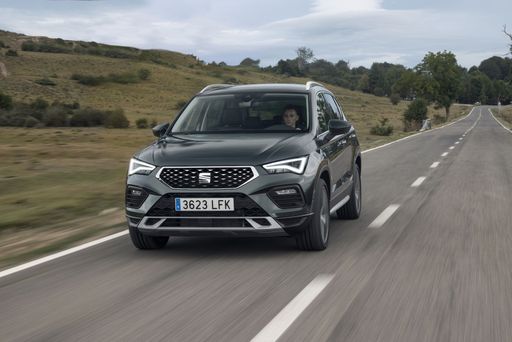 @ SEAT S.A. / SEAT Media Center
@ SEAT S.A. / SEAT Media Center
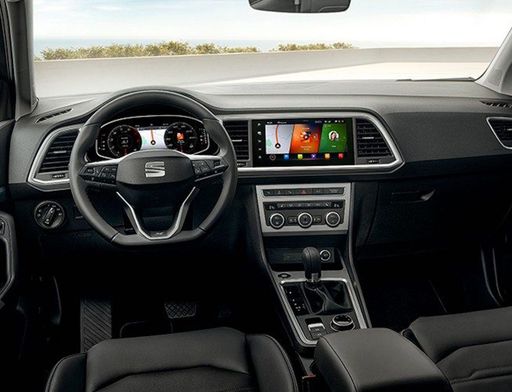 @ SEAT S.A. / SEAT Media Center
@ SEAT S.A. / SEAT Media Center
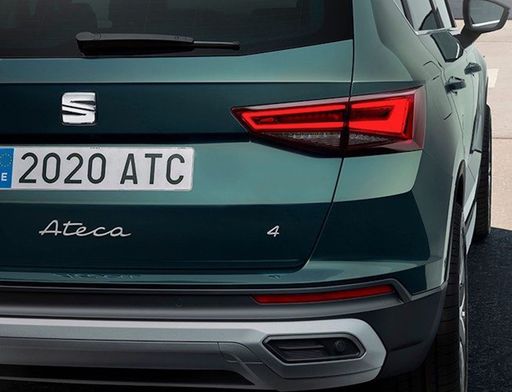 @ SEAT S.A. / SEAT Media Center
@ SEAT S.A. / SEAT Media Center
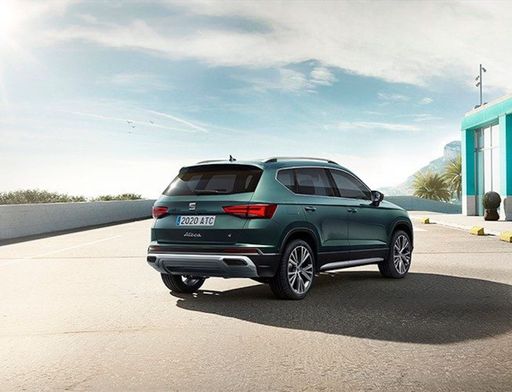 @ SEAT S.A. / SEAT Media Center
@ SEAT S.A. / SEAT Media Center
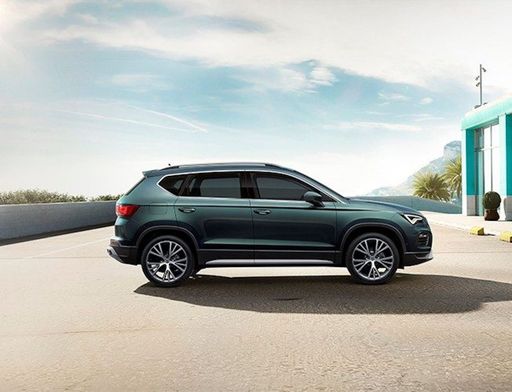 @ SEAT S.A. / SEAT Media Center
@ SEAT S.A. / SEAT Media Center
 @ Hyundai Motor Company
@ Hyundai Motor Company
|
 @ SEAT S.A. / SEAT Media Center
@ SEAT S.A. / SEAT Media Center
|
|
|
|
Costs and Consumption |
|
|---|---|
|
Price
30600 - 46300 £
|
Price
25100 - 36900 £
|
|
Consumption L/100km
1 - 6.9 L
|
Consumption L/100km
4.9 - 6.4 L
|
|
Consumption kWh/100km
-
|
Consumption kWh/100km
-
|
|
Electric Range
64 - 70 km
|
Electric Range
-
|
|
Battery Capacity
-
|
Battery Capacity
-
|
|
co2
22 - 156 g/km
|
co2
129 - 144 g/km
|
|
Fuel tank capacity
42 - 54 L
|
Fuel tank capacity
50 L
|
Dimensions and Body |
|
|---|---|
|
Body Type
SUV
|
Body Type
SUV
|
|
Seats
5
|
Seats
5
|
|
Doors
5
|
Doors
5
|
|
Curb weight
1520 - 1889 kg
|
Curb weight
1345 - 1514 kg
|
|
Trunk capacity
546 - 620 L
|
Trunk capacity
510 L
|
|
Length
4510 - 4520 mm
|
Length
4381 mm
|
|
Width
1865 mm
|
Width
1841 mm
|
|
Height
1650 mm
|
Height
1601 mm
|
|
Max trunk capacity
1721 - 1799 L
|
Max trunk capacity
1604 L
|
|
Payload
525 - 545 kg
|
Payload
516 - 525 kg
|
Engine and Performance |
|
|---|---|
|
Engine Type
Diesel MHEV, Petrol MHEV, Petrol, Full Hybrid, Plugin Hybrid
|
Engine Type
Petrol, Diesel
|
|
Transmission
Automatic, Manuel
|
Transmission
Manuel, Automatic
|
|
Transmission Detail
Dual-Clutch Automatic, Manual Gearbox, Automatic Gearbox
|
Transmission Detail
Manual Gearbox, Dual-Clutch Automatic
|
|
Drive Type
Front-Wheel Drive, All-Wheel Drive
|
Drive Type
Front-Wheel Drive
|
|
Power HP
136 - 252 HP
|
Power HP
116 - 150 HP
|
|
Acceleration 0-100km/h
7.9 - 11.6 s
|
Acceleration 0-100km/h
9 - 11 s
|
|
Max Speed
180 - 194 km/h
|
Max Speed
183 - 202 km/h
|
|
Torque
265 - 367 Nm
|
Torque
200 - 360 Nm
|
|
Number of Cylinders
4
|
Number of Cylinders
3 - 4
|
|
Power kW
100 - 185 kW
|
Power kW
85 - 110 kW
|
|
Engine capacity
1598 cm3
|
Engine capacity
999 - 1968 cm3
|
General |
|
|---|---|
|
Model Year
2024
|
Model Year
2024 - 2025
|
|
CO2 Efficiency Class
E, F, D, B
|
CO2 Efficiency Class
E, D
|
|
Brand
Hyundai
|
Brand
SEAT
|
What drive types are available for the Hyundai Tucson?
Available configurations include Front-Wheel Drive or All-Wheel Drive.
The prices and data displayed are estimates based on German list prices and may vary by country. This information is not legally binding.
